story by John Ernst; photos provided by Mark Weiss
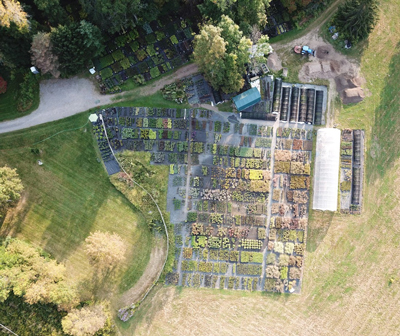
Here’s a fact—one of New York’s largest flower farms started with a twelve-year-old girl from China trying to learn English.
Today, Lan’s Flower Farm spans four acres managed by five employees. That girl—the daughter of Mark Weiss and Xiao Lan— immigrated here in 2005. “She didn’t speak any English, and we brainstormed how she could learn really fast,” Weiss says. Having previously started a landscaping business that didn’t take off, “I had 2,000 empty pots around the property,” he says. He told his daughter she could start selling plants, where she could learn conversational English all day long while making money. “So we started potting bulbs, she had a little roadside stand, and she would sit out there eight hours a day studying. And people would come and buy her plants.”
And then the cards fell into place. “She was doing very well,” Weiss tells me, when one of the local perennial growers went out of business. “So it was kind of an open slot in the community that we were able to fill.”
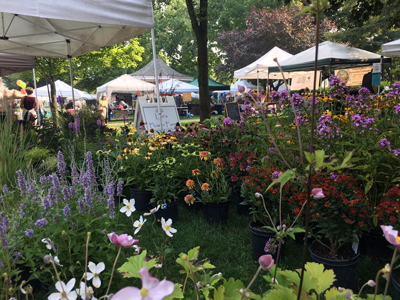
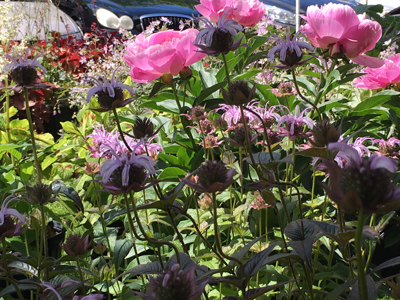
A slot Weiss and Lan take very seriously. In addition to offering a variety of 700 perennials to the Syracuse region, the farm engages in a range of community service and donations. “Aside from working with various schools and churches,” Weiss says, “we also donate to terminal patients to help pay for medical expenses.” Lan’s also funds scholarships and runs tours for garden clubs. “It’s really the backbone of the whole business,” he says.
“We try and do everything as organically as we can,” he adds. “When you’re growing in containers, it’s difficult to have 100 percent organic—it leaches out too quickly. But we don’t spray at all and our soil has no chemicals to speak of.” For fertilizer, they recycle a byproduct of the nearby Anheuser-Busch plant. “Other places have plants in bloom when they shouldn’t be in bloom,” he says, “but we winterize everything. It makes plants hardier.”

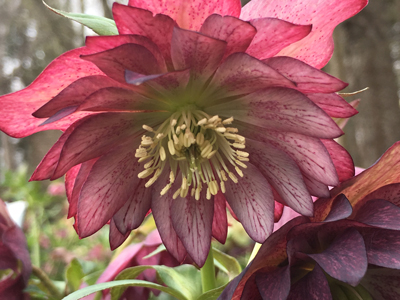
Weiss and Lan formed an official business partnership in 2006 with a couple hundred plants. In 2014 they incorporated, and today sell upwards of 30,000 plants a year.
With their farm organized into four categories—shade, semi-shade, sun, and grass—they do their best to predict what the market will demand each year. “But there’s really no telling. One year a guy bought over 500 containers of grass in one swoop,” Weiss laughs, “so we had none leftover for the next year.”
To stay up-to-date on the perennial world, Weiss and Lan head to Baltimore for MANTS, the Mid-Atlantic Nursery Trade Show. “Plugs, roots, greenhouses, potting machines…anything that can make growing in our industry easier, you can buy there,” Weiss says. “If we see something interesting we’ll try to have it ready for spring, but a lot of it really is like looking into a crystal ball.” It’s hard to decipher what will be popular in the next year, he tells me, and a lot of the new plants are patented and require a license to legally propagate.
Weiss and Lan aren’t completely in the dark, however, when it comes to next-season predictions. Catmint, hostas, and echinaceas are among consistently reliable best-sellers. “We’re actually well-known for our hostas,” Weiss says. “They’re real popular because they have leaf color, come in so many different sizes, and they grow nice flowers—some of them are fragrant. But,” he warns, “the deer love them. So if you have a deer problem, they’ll get destroyed.” Grasses are becoming more popular, too. Weiss says they’re hardy and drought-resistant, surviving through winter if they’re cut short. “But don’t cut them down too short,” he says. “[The landscapers who tend to our local Wegmans stores] cut them right to the ground, which decreases hardiness.”
Despite its grass maintenance habits, Weiss admires the Wegmans approach to landscaping. “They’ve developed this whole buying experience—and it starts at the curb,” he says. “You drive in, and they have beautiful grounds with flowers, trees, and shrubs. Then you go into the grocery store and you’re hit with aromas of baked goods and flowers,” he says. “You go to these other stores…with bright lights and you want to get out as fast as you came in,” he laughs, “but Wegmans has really got it down.”
Then I ask a question that stumps Weiss—if he were to open another location anywhere in the world, where would he go? “Where there are a lot of rich people?” he jokes. Then he tells me that the upstate New York demographic is very interesting. “Rochester and Syracuse are completely different demographics—Rochester is not the blue collar town that Syracuse is.” Syracusians, he explains, are more concerned with practical things like plowing snow than they are with designing their yard. “So people from Rochester spend far more on landscape architecture than we do in Syracuse. Plus, you also have a better climate from being closer to the lake.”
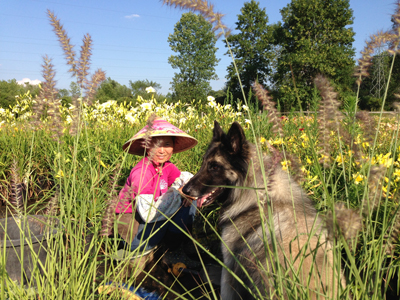
Ultimately, he wouldn’t want to leave Syracuse. “I’ve been here in ‘Cuse since 1978. I know more people here than anywhere else,” he explains. “And our business is a very personal business. We know almost every one of our customers. My wife was at the doctor’s this morning, and we sat next to one of our customers in the waiting room. We know every one of our customers by name or face,” he continues, “and when you get real big you don’t have that anymore.”
And the daughter who started it all? “She’s moved out now,” Weiss says, “but she talks about taking over the business…now that all the work is done!” he laughs.
John Ernst is a writer and graphic designer in Rochester. You can see more of his work at johnmwrites.com.
Views: 0





